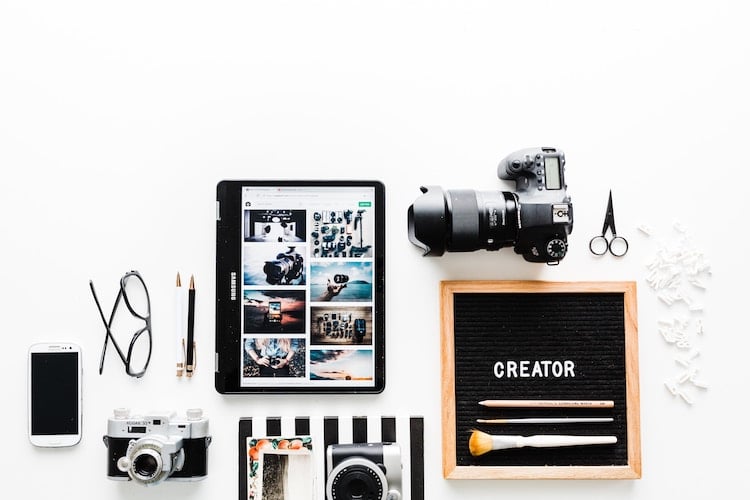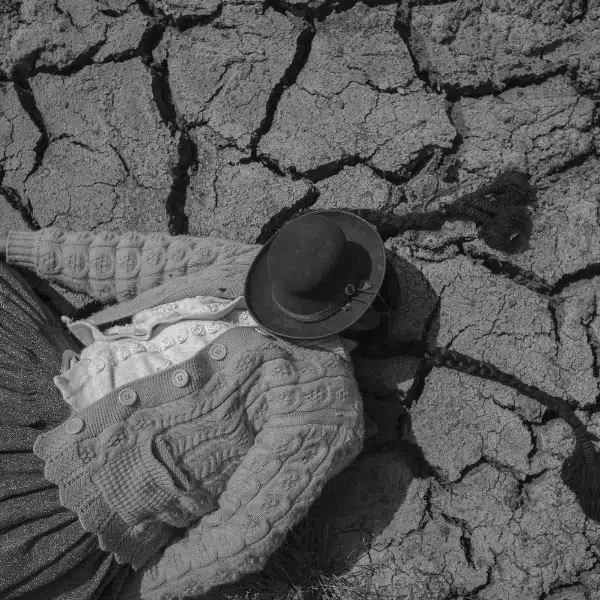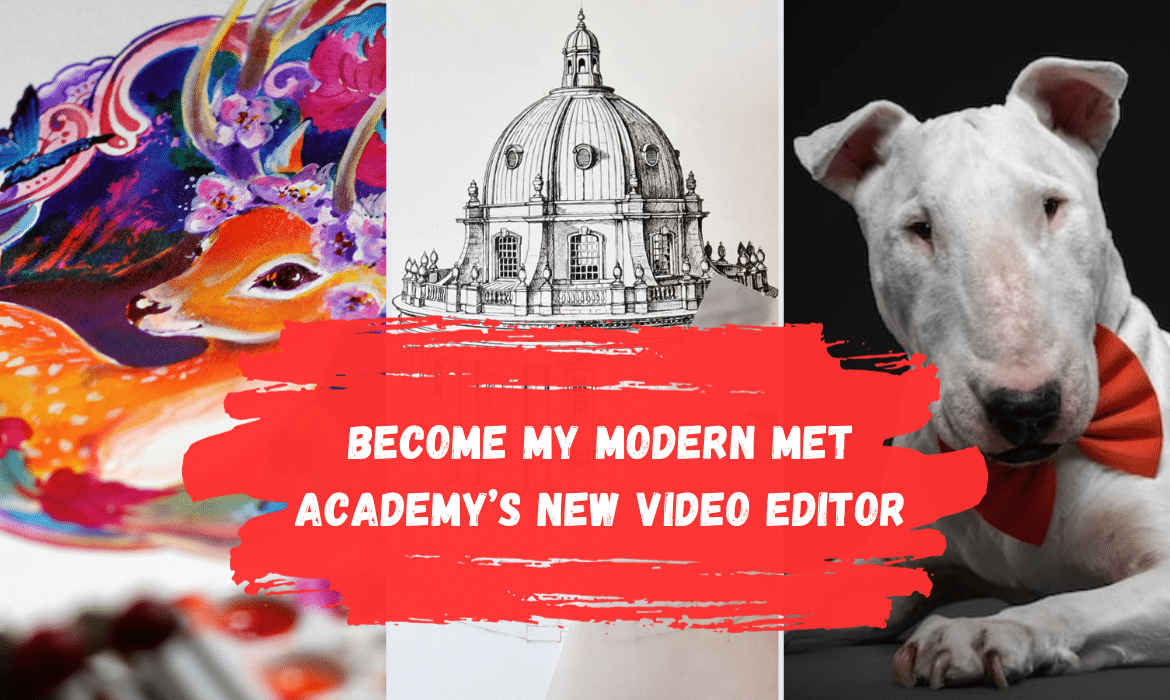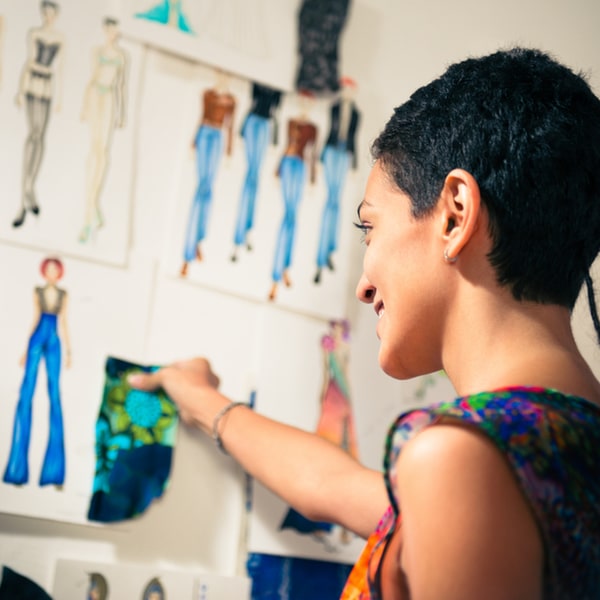
Photo: Bruce Mars
If you think that you can leave your art to speak for itself without any help, think again. Marketing your creativity is critical to any artist's success, and content marketing can help your work reach new audiences. But this means taking things a step beyond basic social media marketing.
Blogging is the perfect platform to help you grow your creative career but is often underestimated by artists. If executed correctly, and consistently, a well-written blog can help skyrocket your career and open up a world of possibilities. Still not convinced? Don't worry, we have six great reasons you'll want to start blogging today.
Don't have a blog yet? Read our guide on how to set up a WordPress blog in 3 easy steps.
Think you don't need a blog if you're an artist? Think again. Here are 6 reasons why every artist should be blogging.
It Helps You Connect With Your Audience
One of the keys to creating a successful brand is cultivating customer loyalty, and there's no better way to do that than by opening yourself up and sharing your knowledge. People love connecting with the artist behind the art they enjoy, and you should view your blog as an opportunity to start a dialogue with your audience in a more meaningful, in-depth manner. Whether you want to share tips for success, give insights into your creative process, or share the personal story behind your latest projects, a blog is a fantastic platform to bring people closer to your work.
And, by consistently blogging, you'll be bringing those loyal followers onto your website, where you'll be posting your latest work and keeping them updated on your upcoming exhibitions and items for sale. By giving them a reason to return, you're also making sure they're constantly exposed to all the great things you have going on creatively.

Photo: Brooke Lark
You Can Tell Your Story
No one understands your art better than you, so why let someone else tell your story? Writing your thoughts and feelings on your work ensures that your projects are framed in the correct context, which will also help journalists to descriptively write about your pieces. Photographer Omar Z. Robles uses his blog as an outlet to share insights into his international photo shoots, giving glimpses of his motivation and helping audiences gain a greater emotional connection with his art.
Make Your Work Go Viral
Giving a fuller picture of your work can also help your next project go viral. While it can sometimes be difficult for the final product to speak for itself, a blog allows you to have your own space to share insight into the creation and execution of complex projects. Having images and text available at one url will also enable easy sharing across social networks, and it's a great resource to send out to publications who may have interest in writing about the work.
Benjamin Von Wong, a photographer who stages elaborate images that have a social message, expertly uses his blog to let his audience in on every stage of the creative process. By taking his audience along on the journey, from concept and planning to execution and final product, he raises the value of the final image and gives an added layer of depth to his photography.

Photo: Thomas Lefebvre
Grow Your Network
While social media is an essential part of any artist's online presence, nothing should replace your website. Connecting a blog to your website isn't just about getting your official story out into the world, it's also a way to draw in a new audience. How so? Through SEO. By writing, you'll naturally be generating new content on your website, which keeps it fresh and high in Google's rankings. And as you write, you'll be using keywords that will bring in new potential clients who may be searching for topics in the area you are discussing. In fact, writing a blog is a great way to ensure that people who don't already know your work will be able to find you.
Eric Kim, a successful street photographer whose blog is a go-to source of information for those in the field is a great example of good SEO. According to SEM Rush, a great tool for SEO tracking and research, Kim's blog has been linked to over 1,800 times by other websites. Full of informative guides and tips for street photography, he's successfully used his blog to get his name out there and, in the process, pulled in a whole new audience.

Photo: Garrhet Sampson
Build New Opportunities
We've discussed different ways creatives can earn a living from their art, including writing eBooks and teaching online classes. A blog can be the perfect place to start dabbling in both spaces before jumping in fully. Short articles can later be gathered into eBooks as you hone your writing skills and could also be a great testing ground for class themes as you figure out what you enjoy sharing with the public. And once you've started on these new ventures, your blog will provide another outlet to publicize and promote your ventures in one space.
At the same time, as you begin growing your network, new opportunities may arrive organically. For instance, if you write an eloquent article explaining your latest installation and how it relates to environmental conservation issues, an organization searching for a keynote speaker at its next conference may enjoy what you have to say—and extend an invitation. Or, an online magazine looking for illustrations of animals may stumble onto your site when searching for fresh talent based on the content you've written. As you carve out a niche that mirrors your artistic practice, you'd be surprised by the new ventures that can come your way.
Push Yourself Creatively
While you may not fancy yourself a writer, forcing yourself to sit down and put your creativity into words will help you grow as an artist. One of the keys to a successful creative career is the ability to communicate your vision and have a clear understanding of your message. Writing is a powerful outlet that forces you to reflect on the choices you've made and the motivations behind them. Looking back on previous posts will also allow you to see how far you've come and whether there are any particularly effective trends in your work—all handy things to know when speaking about your art to potential clients, curators, and gallerists.
So what are you waiting for? Fire up your website and start writing your blog today!
Related Articles:
How to Write an Artist Statement and Effectively Introduce Your Work to the World
10 Questions to Ask Yourself Before Turning Your Creative Passion Into a Profession
4 Basic Tips on How to Improve Your Communication Skills
5 Strategies to Skyrocket Your Email Newsletter to the Next Level






















































































